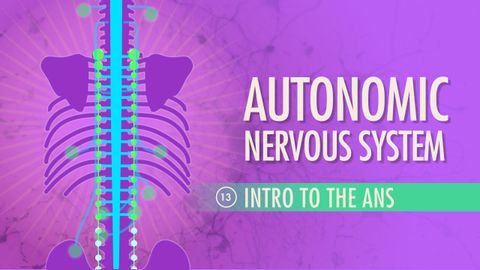
Subtitles & vocabulary
Autonomic Nervous System: Crash Course A&P #13
00
bsofade posted on 2015/05/27Save
Video vocabulary
stress
US / strɛs/
・
UK /stres/
- Transitive Verb
- To emphasize one or more parts of a word, sentence
- To put pressure on something or someone
- Noun (Countable/Uncountable)
- Emphasis on part of a word or sentence
- Pressure on something or someone
A2TOEIC
More rest
US /rɛst/
・
UK /rest/
- Noun (Countable/Uncountable)
- Time when one relaxes, sleeps, or is inactive
- State in which there is a lack of motion
- Verb (Transitive/Intransitive)
- To stop working or avoid activity to recover
- (Of dead person) to lie in a grave
A1
More system
US /ˈsɪstəm/
・
UK /'sɪstəm/
- Noun (Countable/Uncountable)
- Set of organized, planned ideas that work together
- A set of principles or procedures according to which something is done; an organized scheme or method.
- Adjective
- Working in an organized, logical way
A1TOEIC
More long
US /lɔŋ, lɑŋ/
・
UK /lɒŋ/
- Proper Noun
- Person's name
- Adjective
- Large distance from one end to the other
- Having many parts, e.g. a book with many chapters
A1
More Use Energy
Unlock All Vocabulary
Unlock pronunciation, explanations, and filters
